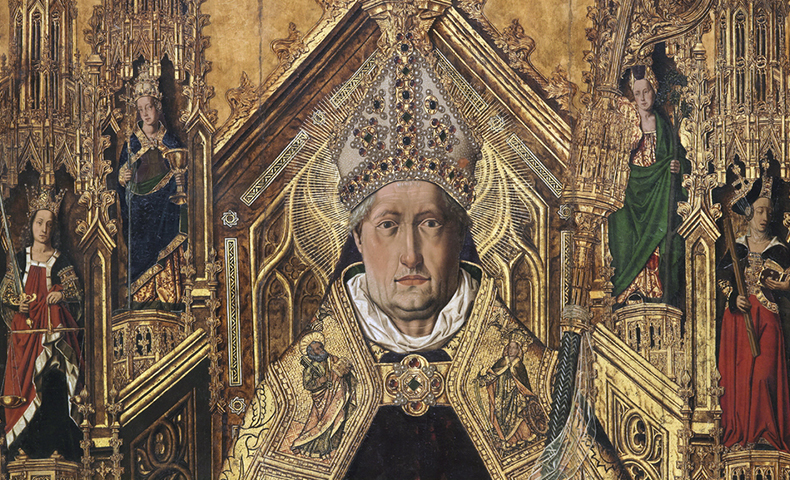Saint Callistus I’s Story – The most reliable information about this saint comes from his enemy Saint Hippolytus, an early antipope, later a martyr for the Church. A negative principle is used: If some worse things had happened, Hippolytus would surely have mentioned them.
Callistus was a slave in the imperial Roman household. Put in charge of the bank by his master, he lost the money deposited, fled, and was caught. After serving time for a while, he was released to make some attempt to recover the money. Apparently he carried his zeal too far, being arrested for brawling in a Jewish synagogue. This time he was condemned to work in the mines of Sardinia. Through the influence of the emperor’s mistress he was released and went to live at Anzio.
After winning his freedom, Callistus was made superintendent of the public Christian burial ground in Rome—still called the cemetery of Saint Callistus—probably the first land owned by the Church. The pope ordained him a deacon and made him his friend and adviser.
Callistus was elected pope by a majority vote of the clergy and laity of Rome, and thereafter was bitterly attacked by the losing candidate, Saint Hippolytus, who let himself be set up as the first antipope in the history of the Church. The schism lasted about 18 years.
Hippolytus is venerated as a saint. He was banished during the persecution of 235 and was reconciled to the Church. He died from his sufferings in Sardinia. He attacked Callistus on two fronts—doctrine and discipline. Hippolytus seems to have exaggerated the distinction between Father and Son—almost making two gods—possibly because theological language had not yet been refined. He also accused Callistus of being too lenient, for reasons we may find surprising: 1) Callistus admitted to Holy Communion those who had already done public penance for murder, adultery, and fornication; 2) he held marriages between free women and slaves to be valid—contrary to Roman law; 3) he authorized the ordination of men who had been married two or three times; 4) he held that mortal sin was not a sufficient reason to depose a bishop; 5) he held to a policy of leniency toward those who had temporarily denied their faith during persecution.
Callistus was martyred during a local disturbance in Trastevere, Rome, and is the first pope—except for Peter—to be commemorated as a martyr in the earliest martyrology of the Church.
Reflection
The life of this man is another reminder that the course of Church history, like that of true love, never did run smooth. The Church had to—and still must—go through the agonizing struggle to state the mysteries of the faith in language that, at the very least, sets up definite barriers to error. On the disciplinary side, the Church had to preserve the mercy of Christ against rigorism, while still upholding the gospel ideal of radical conversion and self-discipline. Every pope—indeed every Christian—must walk the difficult path between “reasonable” indulgence and “reasonable” rigorism.







